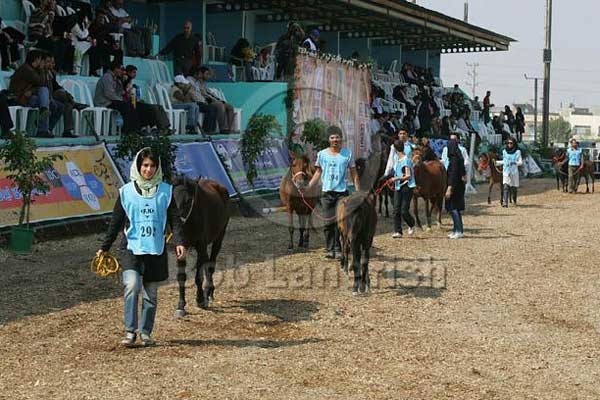When both genealogical and molecular information is available, it can be combined to calculate the coancestry conditional on markers which might better help to estimate the genetic structure of Caspian horse population.
Hosain Shasavarani and Ghodrat Rahimi-Mianji*
Laboratory for Molecular Genetics and Animal Biotechnology, Department of Animal Science, Faculty of Animal Science and Fisheries, Sari Agricultural Sciences and Natural Resources University, P.O. Box, 578 Sari, Iran.
African Journal of Biotechnology Vol. 9 (3), pp. 293-299, 18 January, 2010
ISSN 1684–5315 © 2010 Academic Journals
summary
The present study was undertaken to genetically evaluate Caspian horses for genetic diversity and to asses whether they have experienced recent population bottlenecks.
A total of 100 individuals were characterized for within breed diversity using 16 microsatellite markers. The estimated mean number of alleles was 8.69 per locus, with a total of 139 alleles in the genotyped sample.
The mean effective number of alleles in the Caspian horse population was 5.86, ranging from 3.49 to 8.49. The average observed heterozygosity in the present study (0.52) was lower than to the expected heterozygosity (0.82), which may reflect the narrow genetic base of the current population of this breed.
All marker loci employed in this study were very informative with an average of 0.80. The Chi-square and likelihood ratio tests performed to examine population for HWE showed some highly significant deviations from HWE. Estimated values of Wright’s fixation index, FIS (0.367) indicates a certain level of heterozygote deficiency.
A significant heterozygote excess on the basis of different models, as revealed from Sign and Wilcoxon rank test suggested that Caspian horse population is not in mutation-drift equilibrium.
But, the Mode-shift indicator test showed a normal ‘L’ shaped distribution for allelic class and proportion of alleles, thus indicating the absence of bottleneck events in the recent history of this breed.
The present work is a contribution to the knowledge of population structure and to the assessment of genetic diversity that may be helpful to horse breeders in designing and managing breeding or conservation strategies for the Caspian horse breed.
Keywords: Genetic diversity, microsatellite markers, Caspian horse breed.
Conclusion
The present work contributes to the knowledge of population structure and assessment of existing genetic diversity in the Caspian horse population.
Considering the results from all three test models from Sign and Wilcoxon rank test, it is clear that serious demographic bottlenecks have most probably occurred in this breed.
But, the Mode-shift indicator test showed a normal ‘L’ shaped distribution for allelic class and proportion of alleles, thus indicating the Caspian horse population has not experienced a recent bottlenecks and has been occurred in the past history of this breed.
In the future, genetic analysis for other Iranian horse breeds and their comparisons need to be carried out to determine the phylogenic evolutionary relationships and genetic distances among the indigenous Iranian equine breeds.
However, for Caspian horse breed, high priority action is necessary considering that the breeding practices exercised by local horse owners, may further weaken the diversity levels through the breeding of relatives.
To make a start, providing pedigrees for Caspian horse breeders to collect correct information for breeding management is an obvious strategy.
When both genealogical and molecular information is available, it can be combined to calculate the coancestry conditional on markers which might better help to estimate the genetic structure of Caspian horse population.

